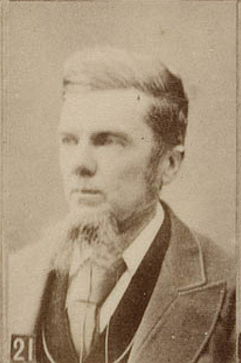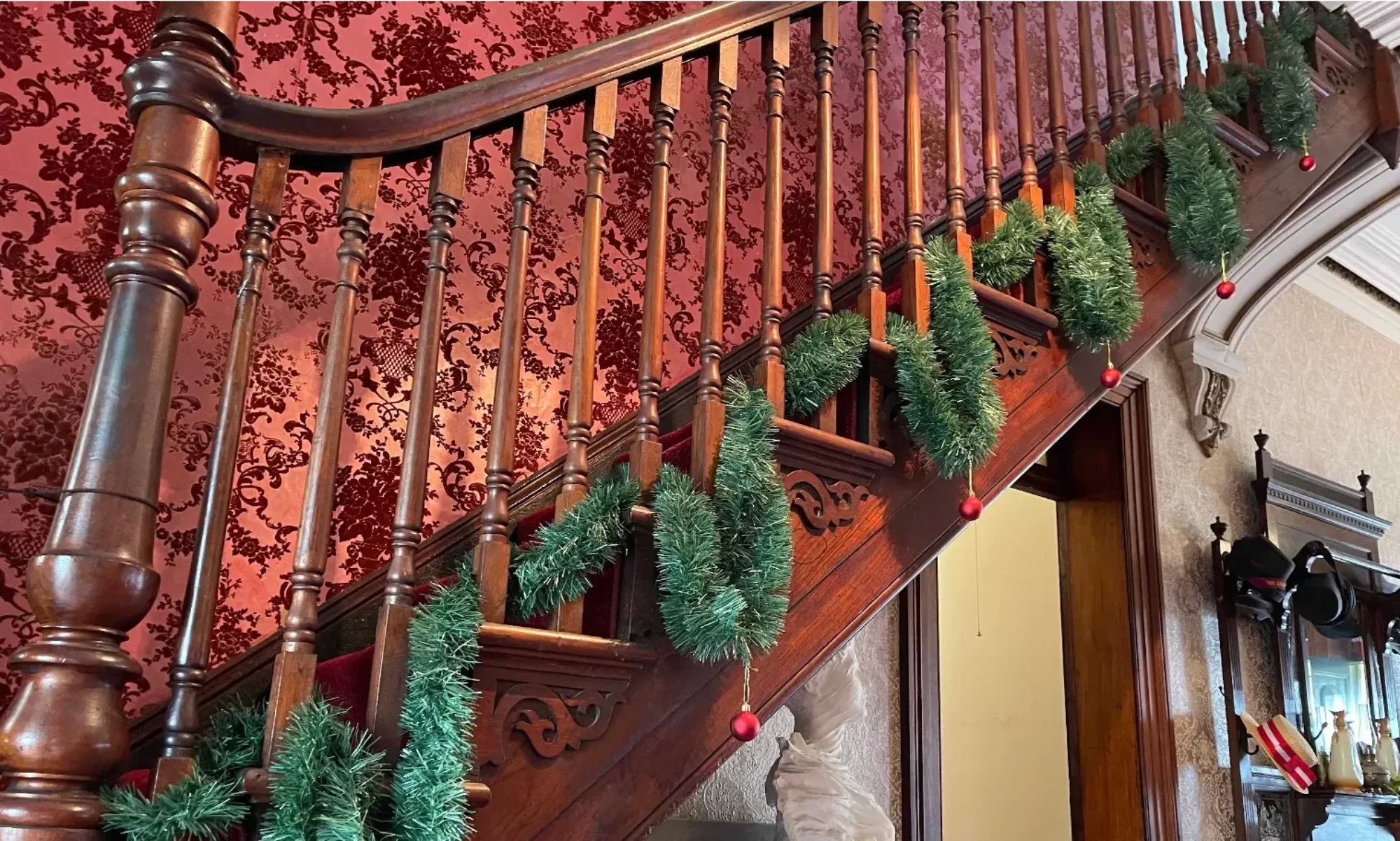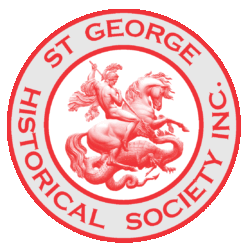by R. W. Rathbone
At a time when protection of the environment is a burning political issue, it is interesting to note that we, in this country at least, have been trying to clean up our act for more than one hundred years.
In the early 1880’s, Sydney was one of the most polluted cities in the world with an infant mortality rate equalling some of the most over-crowded cities in Europe. Much of the blame for this, fairly or unfairly, was levelled at the unhygienic Glebe Island Abbattoirs where the blood and offal of more than 600,000 animals a year was discharged in partially treated or raw form into Rozelle Bay, White Bay and Blackwattle Bay. The stench of rotting organic matter washed up along the shores of fashionable suburbs like Balmain and Glebe Point gave rise to heated complaints from adjoining residents and the site of their fine water views regularly discoloured by the huge quantities of animal blood discharged into the harbour did nothing to assuage their injured feelings while schools of man-eating sharks attracted to the area to gorge on the untreated offal only compounded their outrage.

Added to this, the unregulated establishment of slaughterhouses, knackeries, blood boiling, bone crushing, fell mongering, soap boiling, tallow melting, glue making and tripe boiling factories together with tanneries and wool scouring works in the heavily populated suburbs of Redfern, Alexandria and Botany were blamed for the regular outbreaks of typhoid fever which took a heavy toll of life in these areas every year.
The Government was aware of the problem but reluctant to act because, not only were the operators of these lucrative establishments able to bring pressure to bear for no action to be taken, but it simply did not know what to do with all this waste matter if the factories which processed It were to be closed down.

In the Summer of 1382 a severe outbreak of typhoid fever in the suburb of Redfern which resulted in the deaths of over one hundred people caused the district’s parliamentary representative, Alfred Reginald Fremlin M.L.A., to demand that an area of land, within easy access of Sydney should be set aside to accommodate the activities of all persons engaged In noxious and offensive trades. The Legislative Assembly went even further. It set up a Royal Commission under the Chairmanship of Hon. John Stewart M.L.C., a man of independent liberal principles, a noted veterinary surgeon and a former Professor of Veterinary Science at the University of Glasgow before he emigrated to Australia.
The Commission invited submissions from all interested parties and toured extensively those establishments on which it was required to report. Its description of the conditions which prevailed at the Glebe Island Abattoirs is lurid in the extreme and suitable reading only for those with a very strong stomach and it will suffice to say that as a result of the report of this Royal Commission, the Glebe Island Abattoir was eventually closed and its operations moved to Homebush Bay.
The Commission’s comments on the establishments it visited at Redfern, Alexandria and Botany also make colourful reading but are beyond the scope of this essay.
Boiling down establishments, knackeries, slaughterhouses and fertilizer works also dotted the landscape of the infant Municipality of West Botany, particularly along the courses of Cook’s River and Wolli Creek, Muddy Creek and Patmore’s Swamp and had been a persistent source of complaint ever since the Council had been incorporated. As early as March 1872, Mr. William Bucknell complained about the activities of Messrs. Garden, Staples and Nelson in Arncliffe and the following month a complaint was received about the boiling down works and slaughteryard conducted by Mr. Joseph Davis which was described as “a common nuisance and decidedly injurious to the health of local Inhabitants”. But as three of the six aldermen of the Council also conducted boiling down works as profitable sidelines to their other activities, it was, perhaps, a little optimistic to expect any concerted action to be taken to suppress them.
Mr. William Bucknell, however, was not a man to be put off and in November 1872, he not only demanded that Mr. Garden’s boiling down works be closed but produced a doctor’s certificate which stated categorically that “the effluvia arising from decaying animal matter on these premises is highly injurious to health”. In the face of this evidence, the Council decided to ask Mr. Garden to desist. It was February 1874 before Mr. Bucknell again approached the Council this time complaining about “the small from offal at Morrissey’s”. The Mayor, Alderman Elias Godfrey, took it upon himself to personally investigate the complaint. His subsequent report to the Council that Mr. Morrissey’s piggery, boiling down works and slaughterhouse were remarkably clean considering the state of the weather and that he had found no offensive small arising there from and considered great praise was due to the owner for the clean state in which he kept his premises was, perhaps, a little too emphatic as the Mayor himself operated the largest and most offensive establishment of this kind in the Municipality. Throughout 1875, 1876, 1877 and 1878 the Council received numerous complaints “calling attention to the stenches arising from the piggeries and boiling down works in the neighbourhood of Arncliffe” and ultimately, in 1879, it decided to appoint Mr. David Hannam Jnr. as its first Inspector of Nuisances.
It was then, little wonder that the Royal Commission on Noxious and Offensive Trades decided to include an Inspection of the Municipality of West Botany in its investigations. The Commission visited this area in February 1883. It first inspected Mr. Barden’s boiling down works on the edge of Patmore’s Swamp at Kogarah where there were five boilers, one digester and a bone mill driven by steam. It was described as generally clean with the buildings in fair repair supporting 16 pigs and 100 head of poultry. It processed six tons of offal a week producing 15 hundredweight of tallow and one ton of bone dust.
Mr. William Humphries’s poultry farm off James Street also passed the scrutiny of the Commission. Here there were three boilers that worked continuously processing 7 tons of offal to support 1,500 ducks which in turn produced I47 dozen eggs per week. These premises also produced three hundredweight of tallow. The buildings were described as primitive but in fair repair and passably clean as a result of which very little stock was lost by disease.
Mr. Robert Beehag’s poultry farm near the intersection of Bay Street and Rocky Point Road was also inspected. It, too, was described as “generally clean” and the buildings in good repair. The Commission appeared to be more interested in the fact that with the coming of the railway, land occupied by George Francis’s duck farm near Lady Robinson’s Beach, had increased in value from £100 to £1,500 in a matter of months though it did mention that he raised one thousand head of better class fancy fowl, game, Spanish, bantam and brahms, edible pigeons and superior ducks. He also had twenty pigs which, in the above company, we must assume to have been of above average quality as well.
It was, however, when the Commission arrived in Arncliffe that its visit to the Municipality of West Botany really became worthwhile. Mr. D. Chappelow’s poultry farm In Arncliffe Street was described as “dilapidated and not very clean” and the methods employed as “primitive”. This farm had the highest mortality among its fowls of any premises the Commission had seen and the four boilers gave off a most offensive odour while Mr. David Tuck’s establishment on the banks of Wolli Creek “stunk as bad as anything (the Commission) had yet seen” and was the filthiest they had ever witnessed. The Chairman reported “the fumes from this place adhered to my clothes for many hours, beyond a doubt and I brought the abominable stench with me some 10 or 12 miles back to Sydney”.
Henry Nelson’s establishment nearby, which contained five boilers was also described as “very dilapidated and dirty” whilst Henry Latham’s piggery and boiling down works adjacent to the Illawarra Railway works was described as “being in such a filthy state as to be scarcely expressible with an abominable stench produced by an accumulation of slush and dirt”.
It was not until they got to Godfrey and Moon’s Boiling Down Works just off Rocky Point Road that the Commission was really able to give full vent to its collective outrage. This dreadful establishment, which processed the offal from some 50 of Sydney’s butchers shops produced 5 tons of tallow and 100 tons of bone dust a week. It also boiled down on Instructions from the police, most of Sydney’s unwanted dogs, goats and other discarded domestic animals, their skins going to the nearby tanneries at Botany while their fat was used to dress leather and to make candles. The stench from this enterprise was described as “abominable and foul beyond description”. The Commission concluded that boiling down works were natural, necessary and profitable and a major health hazard would be created if they were closed down as the 362 tons of offal generated each week in Sydney could not be disposed of except at great public expense. It recommended that a suitable area of land a moderate distance from the city and accessible to a railway line should be set aside as a site for all Sydney’s noxious and offensive trades.
The Industries were to be located “where they might be guaranteed against disturbance and where space around them can be provided so that they might give no offence to any existing population”. The site also required a position where a prevailing north east wind carried any odours over uninhabited land.
Sites at Long Bay and Botany were ruled out because the land was too valuable. An area on the southern side of Botany Bay was excluded because it was too inaccessible. The Commission therefore plumped for a site on the Port Hacking River adjacent to the National Park.
This site involved the construction of 12 miles of railway tracks to link it with the main Illawarra Railway Line and a jetty into Port Hacking itself. That was enough to make the Government lose interest and instead it resolved to set aside 432 acres of the Sans Souci Peninsula which the Commission hadn’t recommended as the site for all of Sydney’s noxious and offensive trades. The decision created uproar in the Municipality of West Botany, even those aldermen who stood to gain financially condemning it in the strongest terms.
But all the protestations of the Council would not have saved the day had It not been for the fact that Hon. Thomas Holt M.L.C. owned practically all the land that was to be resumed. Holt not only had many influential friends In high places but had bailed out the impecunious Premier, Sir Henry Parkes, on a number of occasions when that eminent gentleman was facing bankruptcy and in the spirit now well entrenched in N.S.W. politics, he decided to return his friend’s favours by officially abandoning the proposition in April 1887.
Thus, no site was ever set aside. The Glebe Island Abattoirs continued to pollute the waters of Sydney Harbour for another thirty years and only improved technology eventually made the stinking old boilers redundant.
This article was first published in the July 1990 edition of our magazine.
Browse the magazine archive.

